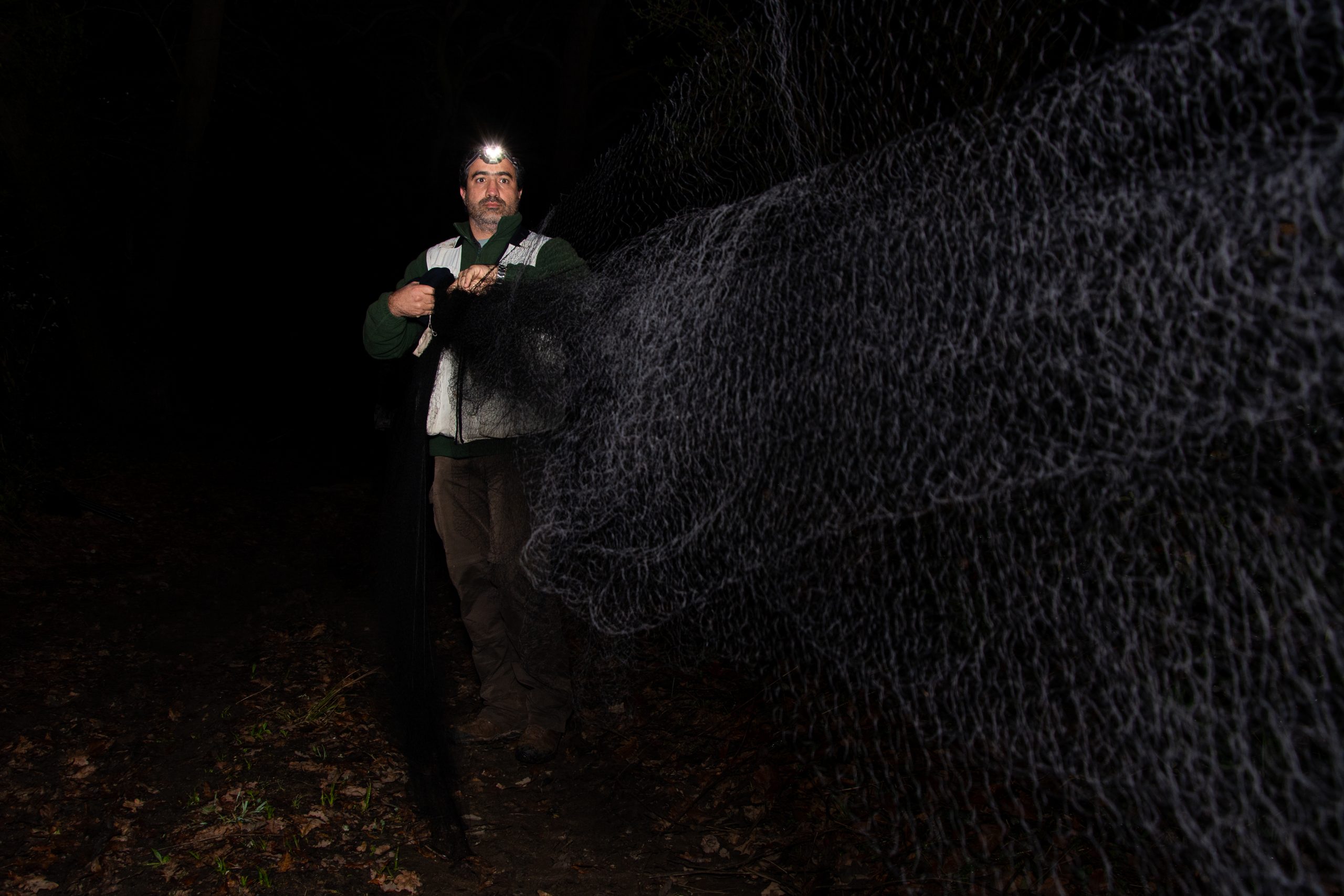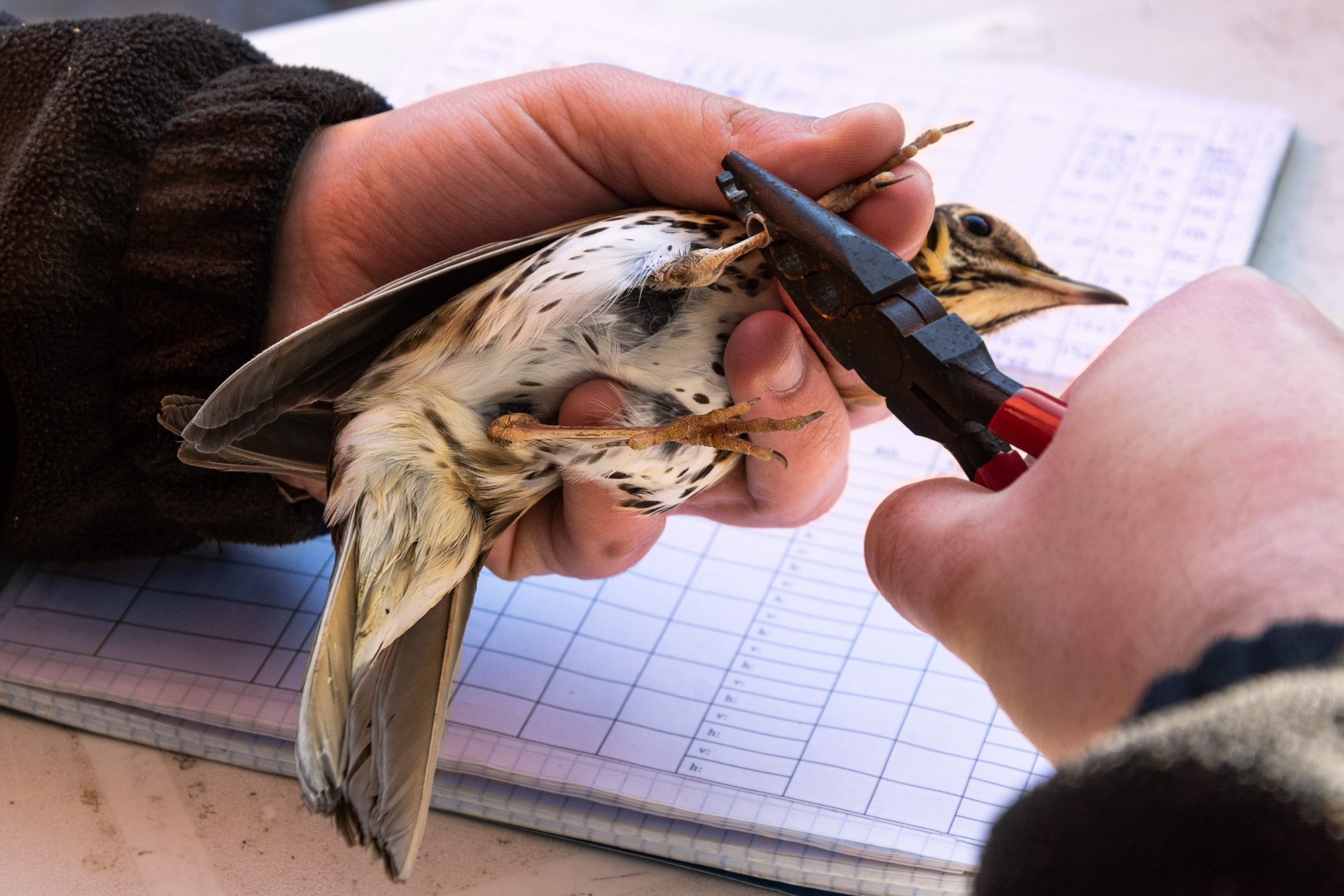Birds are a group of tetrapods that include about 10 000 species, spread across the planet. All these species evolved from a group of dinosaurs, known as theropods, during the Jurassic, 165 to 150 million years ago. Since then, birds have adapted to the most varied habitats and acquired incredibly peculiar forms and behaviours. It is not surprising that these are probably the animals that most fascinate us and there are people all around the world, professionals and amateurs, studying them. Bird ringing is an individual marking method, which has become quite popular in scientific research given its high efficacy in the study of bird biology.

It’s 6 am of a Saturday and the group GVC meets at the entrance of Gaia Biological Park for another ringing session. The morning starts cold and the thermometer shows 0 °C, but this does not prevent the participants from getting to work. All the members of the group are volunteers from the most varied professional areas, but they all have something in common, a great fascination with birds and a great desire to contribute to nature conservation. Through the darkness, the group rushes to set up the vertical mist nets, which must be ready before sunrise. These nets are designed to be as less visible as possible, thus increasing the probability to capture something.

Many birds, ringed at great distances have been recaptured in the mist nets of GVC. A blackcap (Sylvia atricapilla) ringed in October 2015 in Antwerp (Belgium), was recaptured at Gaia Biological Park in January 2016. The blackcap is a resident species in Portugal, however the Portuguese populations are reinforced with migratory individuals from northern Europe during the winter. The distance between both points is an extraordinary 1500 km, but is probable this passerine has travelled much more, mainly if we consider that the flight is done twice a year (point A to point B and B to A), every year. Another example is a Eurasian reed warbler (Acrocephalus scirpaceus). Weighing only 9,4 g, the animal was recaptured by the group one month after being ringed in the Netherlands, at 1578 km of distance. Although these distances are considerable, they are far from the longest migration on the planet, the great migration of the Arctic tern (Sterna paradisaea). This species sees two summers a year, since it nests in the Arctic and travels later to Antarctica, but then returns to the extreme north, being the maximum distance recorded until today of 96,000 km. Information such as these, often obtained through ringing, allows the understanding of the migratory patterns of birds, which is crucial for species conservation strategies.

One hour has passed since the group has set up the mist nets, which means it’s time to do the first round and see if any bird was captured. By this time, bird activity has already increased and we hear several species marking their territory. This bustle anticipates a session full of birds. Just in the first hour, 31 animals, belonging to several species, were captured, including the common chaffinch (Fringilla coelebs), the blackcap, the great tit (Parus major), the common blackbird (Turdus merula) and the song thrush (Turdus philomelos). And the reader asks, how birds get trapped in the mist nets? Don’t they get hurt? The nets have a very fine mesh and are composed of several pockets. When an animal flies in the direction of the net, it falls into one of the pockets and gets trapped, being the risk of damage quite low. Removing birds from the net requires a lot of training and thorough technique and only experienced people can do so, ensuring the welfare of the birds.

The group always has some idea of the species that might be captured in each ringing session, but sometimes there are surprises. Although the redwing (Turdus iliacus) is not a common species in the park, during this month (February) there is the possibility of capturing it. It doesn’t happen every year, but this really is a very beautiful bird that any ringer would be happy to have in their hands.

After the round is over, we return to the place where the birds will be ringed. The size and weight of the rings are adapted to each species, ensuring they do not have any negative effect on the birds. Each ring has engraved a unique alphanumeric code, which works almost like an ID card, allowing the distinction of individuals, even within the same species.

Afterwards, several morphometric measurements are taken, the weight and the age are also inferred, the sex (when possible) and the physical conditions.
Later, we recaptured short-toed treecreeper (Certhia brachydactyla), a very special species for GVC. In 2008 an individual was ringed and was recaptured 8 years and some months later; a worldwide longevity record for the species. Prior to this finding, it was thought that the short-toed treecreeper could only live up to 5 years of age. The oldest known bird is a Laysan albatross (Phoebastria immutabilis), ringed in 1956, estimated to be at least 68 years old. This is another reason why bird ringing is so important, as it allows to understand the longevity of wild species.

As time passed, more birds fell on the nets and various subjects related to nature conservation were discussed. It’s now 12h:15. After a long morning, the temperature finally rose slightly, and it was time to pack up. In addition to the already referred species, 5 more were caught, of which the house sparrow (Passer domesticus) and the spotless starling (Sturnus unicolor) stand out. Although very common, they are not frequently captured. In total, 70 birds from 11 different species were recorded on the dataset.

The species captured on this day are considered common and can be easily observed in the Park. Contrary to what may seem, studying these species is very important because allows us to understand their population dynamics over the years, which gives us an idea how the quality of the habitats evolve over time, information that is crucial for conservation decisions. This is possible because these species, when compared to less common ones, are captured and recaptured more frequently in different seasons and consecutive years.
Thank you for reading this article. If you have any questions or suggestions feel free to contact me.
